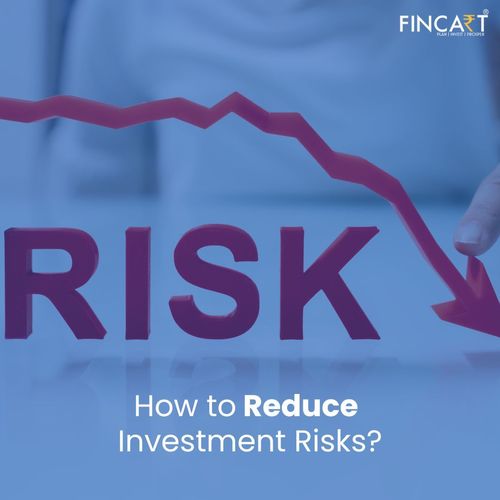Table of Contents
ToggleEarning money is like building something, bit by bit, with hard work, long hours, dedication, and steady commitment. No wonder the thought of investing that hard-earned money can spark a touch of unease in people.
Investing money is a big decision, sort of like walking on a high wire over a deep gap. We’re trying to balance the chance of getting more money with the worry of losing what we’ve worked hard for. But sometimes we forget that fear isn’t always a foe. In fact, it can be the contrary, a friend who can help us make smart choices and think carefully about risk management, can reduce investment risk.
The truth is that every investment comes with some level of uncertainty. However, if we plan well and have a good strategy, we can make those uncertainties smaller. In this article, we’re going to explore ways to reduce investment risk. That way, you can feel more sure of yourself when you’re dealing with investments. Remember, minimizing investment risk isn’t about avoiding all uncertainty, but rather about making informed choices.
Understand your risk tolerance
One of the most important aspects of successful investing is understanding how much risk you can afford. Risk Tolerance in Investing is how comfortable you are with your investments going up and down in value.
Risk tolerance is very subjective as people have different priorities. It can be influenced by factors such as age, financial goals, responsibilities, and personality. For instance, younger individuals with fewer financial responsibilities may be more willing to take on higher-risk investments in pursuit of potentially higher returns. On the other hand, older individuals who have a family depending on them like college going children, and who are nearing retirement, might prefer more traditional investments to safeguard their money. It’s essential to align your investment choices with your risk tolerance to ensure you stay comfortable even when the market goes south.
Finding the right balance between the investment options you choose and how much risk you’re okay with is really important. When you do this, you make sure that the way you’re investing matches what you feel good about, even when the market isn’t doing well. So, you won’t get too worried when the financial markets aren’t doing as well as you wanted them to.
Diversify your investment
Diversification is an important plan to lower the risk of your investments. When you spread your money across different options like stocks, bonds, real estate, and gold, it’s a clever way to keep your investments safer. By not putting all your money into just one thing, it helps to even out the changes in their value over time. In the end, it’s safer not to keep all your eggs in one basket, right?
It is proven that having a well-spread collection of 25 to 30 different asset classes is the best way to lower risk without spending too much.
If you’re a retail investor, a great way to make your portfolio more diverse is by investing in various mutual funds. Purchasing mutual fund shares provides a cost-effective method to spread out your investments. All in all, diversifying your portfolio could lead to higher returns over the long run.
Also Read: Long Term Investment – What is it and How Does it Work?
Conduct thorough research:
The adage “the more you know, the less you fear” holds true when it comes to investing. Before committing your money to any investment, it’s crucial to conduct thorough research. Though it’s impossible to foresee all changes in the market, a well-informed investor is in a better position to make smart choices. Research doesn’t have to be exhaustive, but you should look into important things like –
- Performance: How it has done in the past.
- Management: Who runs it and their track record.
- Market Trends: Industry and market outlook.
- Financial Health: Company's stability and profits.
- Competitors: How it compares to others.
- Risks: Potential challenges it might face.
- Diversification: How it fits your overall portfolio.
- Costs: Fees or expenses involved.
- Updates: Any important updates or changes.
Warren Buffett once said, “Risk comes from not knowing what you’re doing.” If you really understand what you’re investing in, you can pick better options that align with how much risk you’re comfortable with and your financial goals.
Focus on time in market
Ken Fisher once said, “Time in the market beats timing the market.” This means it’s smarter to keep your investments for a while instead of trying to predict short-term changes. For investors, the strongest tools to build wealth are time and compounding. Trying to time the market perfectly is incredibly challenging, even for seasoned professionals. Moreover, buying and selling a lot can lead to transaction costs and reduce your gains.
If you think long-term, you can handle market fluctuations better. You will also benefit from the compounding effect, where your returns generate additional returns over time. Long-term investments don’t really get affected by the ups and downs of the market. The Indian market has historically demonstrated growth potential, and staying invested through market cycles allows you to capture this potential without getting stressed about timing.
You can consider having one or more Systematic Investment Plans (SIPs) in place to ensure that you get the benefit of disciplined investing while staying invested in the long term.
Monitor portfolio performance
Even though thinking long-term is good, you should also keep a check and balance your investments. Everything in life is dynamic. The way the market works, the economy, and your own situation can change, affecting how you invest.
Monitor how well your investments are doing and make changes if necessary. If something you invested in isn’t doing well for a while, ponder if it still matches what you want and how much risk you’re comfortable with. Don’t be afraid to adjust your portfolio from time to time. It’s smarter to sell the investments that aren’t doing well rather than letting them drag your whole portfolio down.
But remember, don’t check your investments too often. It’s best to review them once a year or if you’re really eager, every six months. If you do it more often, it might not be good because you could end up making too many changes, which might not be helpful.
Conclusion
Investing with risks, but you can control and lessen these risks with smart strategies. By knowing how much risk you’re comfortable with, spreading your money across different kinds of investments, and learning about what you’re investing in, you’re on the right track!
Setting sensible goals and keeping an eye on how your investments are doing is also crucial.
Another way to reduce investment risk is to consult with an investment planner. They can provide professional guidance and help you make choices that match your financial goals and risk tolerance.
Remember, there’s no magic formula to eliminate all risk. But by following these simple steps and working with investment planners, you’re giving yourself a better chance to grow your money and reach your financial dreams!
Also Read: Best Investment Plans for Monthly Income in India
You’ll receive periodic reports detailing your portfolio’s performance and suggesting any necessary adjustments!




